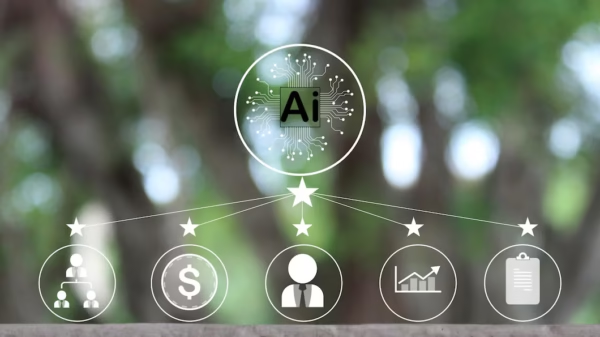Introduction to Machine Learning in Enterprises
Machine learning, a subset of artificial intelligence, has rapidly gained prominence in the enterprise landscape, transforming the way businesses operate, make decisions, and interact with customers. Unlike traditional programming, where programmers explicitly codify rules for a system to follow, machine learning enables systems to learn from data and improve their performance over time without being explicitly programmed for each specific task. This paradigm shift allows organizations to harness the power of data-driven insights, facilitating agile decision-making processes.
In recent years, the applications of machine learning across various industries have become increasingly diverse and impactful. For example, in healthcare, algorithms analyze vast datasets to predict patient outcomes or identify potential treatment options, thereby enhancing patient care. In retail, machine learning algorithms are utilized to optimize inventory management and personalize customer experiences through recommendation systems. Furthermore, financial institutions leverage machine learning techniques for fraud detection and credit scoring, significantly improving their operational efficiency and risk management.
The significance of machine learning in enterprises extends beyond operational efficiency; it also supports strategic business objectives. By employing machine learning models, organizations can identify trends and patterns that may not be immediately apparent through conventional analysis, thus driving innovation and competitive advantages. Additionally, as markets become increasingly data-oriented, businesses that effectively implement machine learning technologies stand to benefit from improved customer engagement, cost reductions, and the ability to adapt to changing market dynamics.
As we delve deeper into the various types of machine learning algorithms, it is crucial to recognize their potential in addressing the unique challenges faced by enterprises. Understanding these algorithms is essential for fostering a data-driven culture that not only prioritizes analytical thinking but also empowers organizations to make informed decisions based on empirical evidence.
Supervised Learning Algorithms
Supervised learning is a fundamental approach in machine learning, extensively employed by enterprises to make predictions and classify data based on labeled training datasets. The functionality of supervised learning algorithms revolves around the premise of learning from known inputs and outputs, enabling the model to generalize patterns that can be applied to unseen data. This section discusses some pivotal algorithms like linear regression, decision trees, and support vector machines, which are instrumental in various business applications.
Linear regression is one of the simplest yet highly effective supervised learning algorithms used primarily for regression tasks. It works by establishing a linear relationship between the input variables and the output variable. Businesses often use linear regression in forecasting sales, analyzing customer trends, and evaluating the impact of marketing strategies on performance. Its interpretability and ease of implementation make it a popular choice among data analysts.
Decision trees offer a versatile framework for both classification and regression tasks. This algorithm splits the dataset into subsets based on feature value conditions, gradually leading to a predicted output. Decision trees are particularly useful in industries like finance for credit risk assessments and in healthcare for diagnosing diseases based on patient data. The visual nature of decision trees also enhances stakeholder engagement, making them easier to understand and analyze.
Support vector machines (SVM) represent another powerful supervised learning technique. They function by finding the optimal hyperplane that separates data points of different classes in a multidimensional space. SVM is well-suited for classification tasks and has been effectively utilized in marketing for customer segmentation and in finance for fraud detection. Its robustness to high-dimensional spaces and effectiveness in various scenarios underline its significance in enterprise-level machine learning applications.
Unsupervised Learning Algorithms
Unsupervised learning algorithms play a crucial role in machine learning, particularly for enterprises seeking to extract insights from unlabelled data. Unlike supervised learning, which requires labeled input for training, unsupervised learning focuses on identifying patterns and structures within datasets. This ability enables organizations to discover hidden relationships that may not be immediately apparent, making informed decisions based on data-driven insights.
One of the prominent algorithms in this category is k-means clustering. This algorithm groups data points into clusters based on their similarities. It works iteratively to assign each data point to the nearest cluster center, updating the centers as it improves the clustering. Companies often utilize k-means clustering for customer segmentation, where they can identify distinct groups of consumers, enabling targeted marketing strategies and personalized service offerings.
Hierarchical clustering is another effective unsupervised learning approach, allowing businesses to build a tree-like structure of clusters. This method is particularly valuable for exploratory data analysis, as it provides a visual representation for understanding the relationships between various data points. Enterprises use hierarchical clustering for applications such as market basket analysis, where businesses can determine the purchasing patterns of customers by analyzing how different product categories relate to one another.
Principal component analysis (PCA) is an advanced technique used to reduce the dimensionality of large datasets while retaining as much variance as possible. This process is beneficial for organizations aiming to simplify complex data without losing significant information. PCA is often employed in scenarios such as anomaly detection, where businesses can identify unusual patterns that could signify fraudulent activity or operational inefficiencies.
In conclusion, unsupervised learning algorithms are essential tools for enterprises seeking to harness the full potential of unlabelled data. By employing techniques such as k-means clustering, hierarchical clustering, and PCA, organizations can effectively uncover insights, drive strategic decision-making, and enhance customer experiences.
Reinforcement Learning Algorithms
Reinforcement learning (RL) is a significant category of machine learning that emphasizes the training of agents to make decisions by interacting with an environment. The core principle of reinforcement learning is to learn optimal behaviors through rewards and penalties. Agents strive to maximize their cumulative reward over time, making it a dynamic and iterative process. This method distinguishes itself from other machine learning paradigms, like supervised and unsupervised learning, as it focuses on the sequence of actions taken rather than static data.
One of the most widely used algorithms in reinforcement learning is Q-learning. Q-learning enables an agent to learn the value of taking a particular action in a given state without requiring a model of the environment. By continuously updating a Q-value table, the agent can gradually refine its policy for achieving optimal action selections. Another advanced algorithm is deep reinforcement learning, which combines traditional RL with deep learning techniques. This synergy allows RL agents to process high-dimensional sensory inputs, leading to performance improvements in complex tasks. Applications of deep reinforcement learning are becoming increasingly prevalent in areas such as robotics, gaming, and even healthcare.
In enterprise settings, reinforcement learning is making notable impacts. For example, it can optimize supply chain logistics by dynamically adjusting inventory levels based on real-time demand signals and transportation conditions. Additionally, reinforcement learning algorithms are being employed in portfolio management, where they enable automated agents to make investment decisions based on market fluctuations and historical performance data. These intelligent agents help organizations navigate uncertainty and complexity in decision-making processes.
Looking ahead, the future of reinforcement learning in business applications appears promising. As more data becomes available and computational power continues to grow, organizations will increasingly leverage RL to develop more sophisticated models for predictive analytics and automation. Effective implementation of reinforcement learning algorithms could revolutionize how enterprises operate, providing significant competitive advantages across various sectors.



















